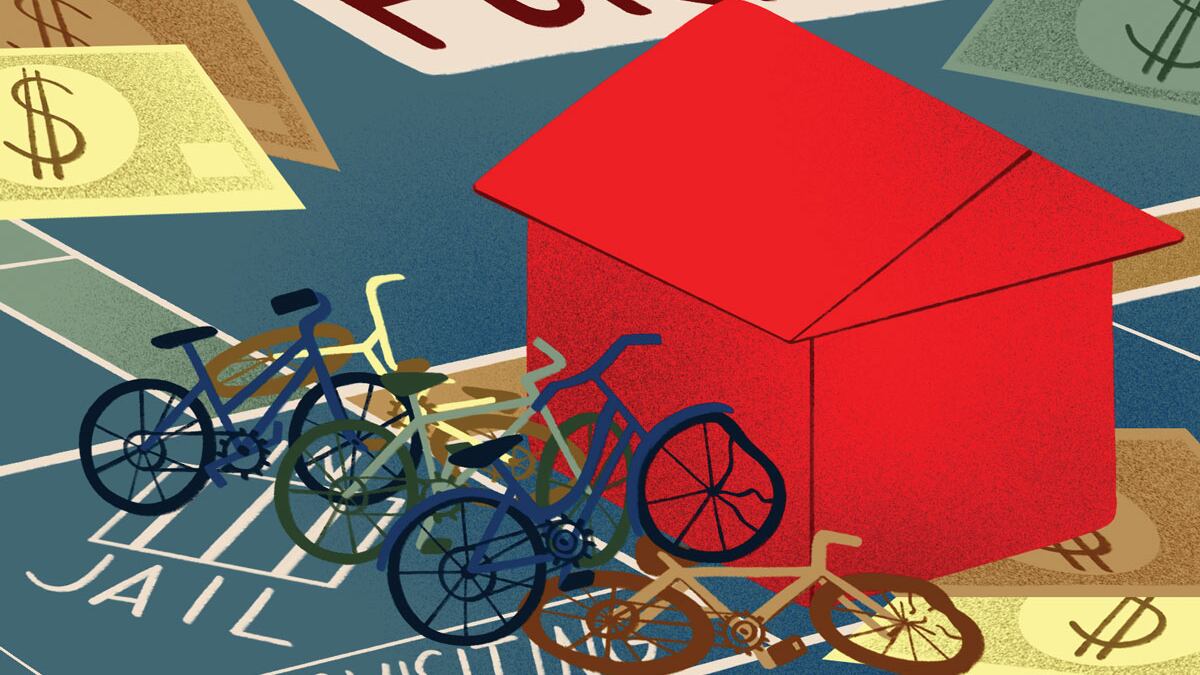Rapid development of the Pearl District is causing conflict between two competing city policies. On one side is the need for greater density, which necessitates taller buildings. On the other: the development of better bicycle and pedestrian infrastructure.
The current flash point is a quarter-block lot at Northwest 12th Avenue and Flanders Street currently occupied by surface parking and one of the few remaining large trees in the Pearl District, a portly silver maple.

Under a plan created by Vibrant Cities, a Seattle developer, the tree would be turned into sawdust and the parking lot will become a 250-foot residential tower.
The new building would include an 11-story Hyatt Place Hotel and, above it, 110 private residences. At 23 stories, it would be the tallest building in the neighborhood, permitted by new height allowances under the city's recently adopted 2035 Comprehensive Plan.
The building would not include a single parking space. That's in keeping with a longtime city policy aimed at increasing the use of transit, bicycles and other forms of transportation.
Still, many hotel guests and residents are likely to rely on taxis, Uber, Lyft or valet parking—which could mean increased traffic and parking along the project's Flanders Street frontage.
That's a problem, because it sits directly in the path of a planned Flanders Street Neighborhood Greenway, which is supposed to provide a straight shot from the Eastbank Esplanade to Northwest Portland via the Pearl.
For nearly a decade, city planners have worked toward this bike and walking path. Planning is now finished and the Portland Bureau of Transportation is preparing the key link—Flanders Crossing, a new bridge to be built over Interstate 405 next year.
Advocates worry the Portland Design Commission is poised to wreck that causeway—with valet parking for cars.
"The Flanders bikeway is going to be the biggest game-changer for biking and walking in Northwest Portland in decades," says Scott Kocher, a cycling advocate who rides daily between Northwest and downtown. "To wreck even one block for the Hyatt is going to kneecap this thing and would be a really dumb idea."
Kocher and other critics argue a constant stream of vehicles picking up and dropping off passengers at the new tower will dominate a lane on Flanders designated for bikes, disrupting the greenway.
Nearly every new project of any size generates opposition. Often the objections are parochial: Views will be blocked or, critics worry, new development will change a neighborhood's "character." The dispute over the Flanders Street project, however, is far more than a mere NIMBY squabble, because it affects thousands of residents who live outside the neighborhood and may one day travel through it by bicycle.
City planners think bike and pedestrian traffic over Flanders Crossing, for instance, could quickly rival that on the Hawthorne Bridge, long a favorite of cyclists and pedestrians.
Dozens of residents filed comments opposing the Hyatt project with the design commission.
Patricia Cliff, who leads a group called Pearl Neighbors for Integrity in Design, says she's worried the city's process is putting too much emphasis on the desires of the developer at the expense of Portlanders who would use the Flanders Street greenway daily.
"They have three valet parking spaces on Flanders, which, in our opinion, will interfere with the greenway bike path and cause major traffic disruptions," Cliff says.
The project is currently in the design review process, and one commissioner opined at a Nov. 21 meeting that if conflicts between vehicular traffic generated by the new development and bikes would be as bad as critics fear, the city might have to give up on the Flanders Street greenway plan.
That sentiment infuriates Cliff and her allies. "The commission is prioritizing the developer's interest over the broader public interest," she says.James Wong, the Seattle-based CEO and co-founder of Vibrant Cities, disagrees.
He says the project will "be a great addition and complement to the greenway's goals."
The Transportation Bureau, which would build and maintain the Flanders greenway, did not object to the developer's plan.
PBOT spokesman Dylan Rivera says that's because his agency will take what the design commission approves and determine the most efficient way to use adjoining sidewalks and streets—including the Flanders greenway.
"The land use approval the developer is seeking cannot restrict how PBOT manages the public streets," Rivera says. The bureau's priority for the neighborhood, he adds, is to make the greenway work.
"In a dense urban area, how do we make the most efficient use of the roads?" Rivera says, noting that pedestrians and cyclists take up much less space than cars. "We're moving people, not cars. We feel comfortable prioritizing neighborhood greenways."
Cliff, who spent four decades in the real estate business, is leery of relying on PBOT to save the day if the design commission approves the project in early January, as she expects. Cliff would prefer certainty for an uninterrupted greenway.
"PBOT says, 'We will figure it out when the plans are approved,'" Cliff says. "To me, they are putting the cart before the horse.

